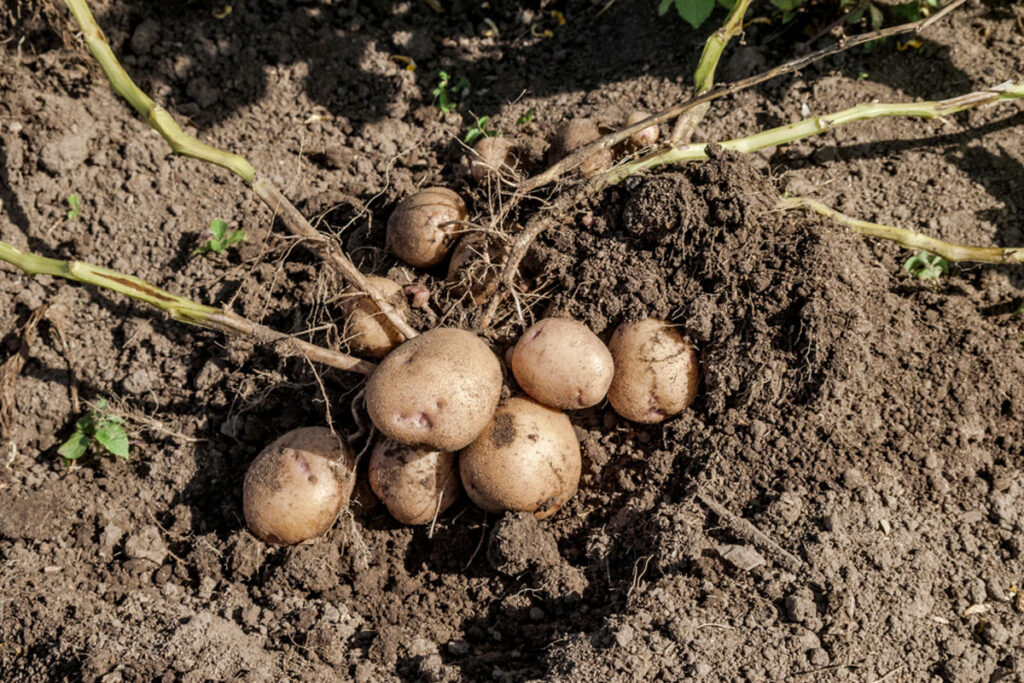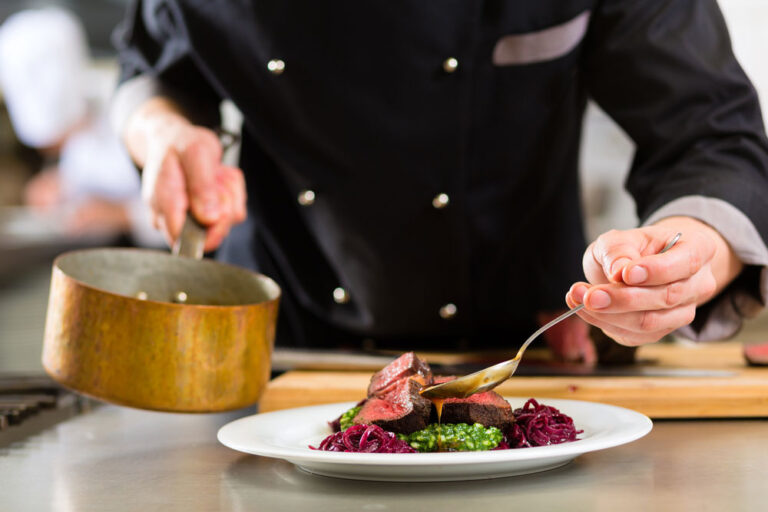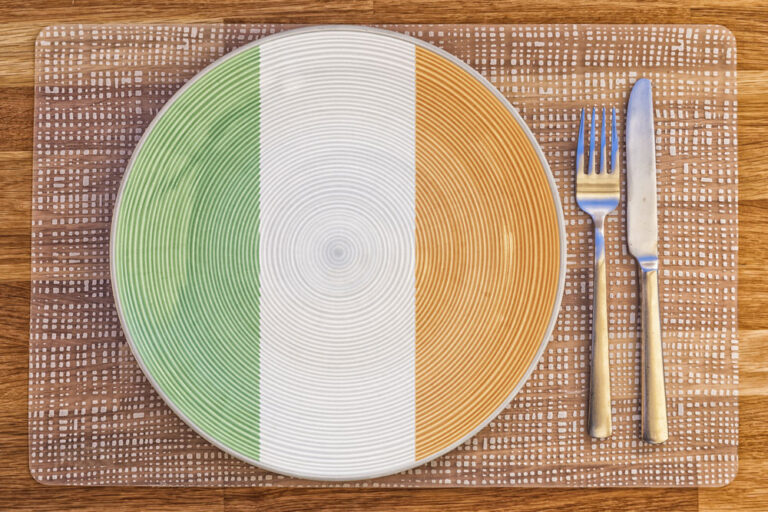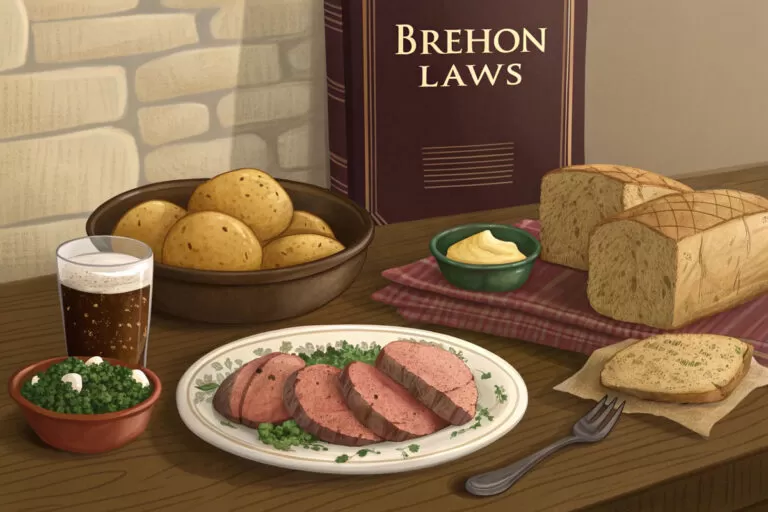Introduction to the Interplay Between Literature and Cuisine in Ireland
Ireland boasts a rich tapestry of cultural heritage, where literature and cuisine are deeply intertwined. The island’s literary tradition, steeped in myth, folklore, and history, offers a unique lens through which to explore its culinary customs. Conversely, the evolving food culture of Ireland often mirrors themes found in its literature, creating a symbiotic relationship that enriches both realms.
Historical Context
The history of Irish literature is a story of resilience and identity, much like the history of its cuisine. From the early sagas and epics to the modernist movements of the 20th century, Irish writers have consistently drawn from their environment, a landscape characterized by both abundance and hardship. Similarly, Ireland’s culinary traditions have evolved through periods of scarcity and prosperity, shaped by factors such as colonialism, famine, and global influences.
Literature Reflecting Culinary Traditions
Irish literature frequently highlights the centrality of food in daily life, celebrations, and rituals. Early Irish myths and legends, such as those found in the Ulster Cycle or the Fenian Cycle, often depict feasts that underscore social hierarchies and community bonds. For instance, the epic Táin Bó Cúailnge (The Cattle Raid of Cooley) features lavish banquets that not only serve as settings for important narrative developments but also reflect the agricultural wealth and hospitality values of ancient Ireland.
The literary works of the 19th and 20th centuries, including those by James Joyce and W.B. Yeats, continue this tradition by illustrating the interplay between food and social conditions. In Joyce’s Dubliners, for example, the detailed descriptions of meals provide insights into the socioeconomic status of characters, while also revealing broader societal norms and aspirations.
Cuisine Influencing Literature
Conversely, Ireland’s culinary landscape has influenced its literature by providing rich metaphors and settings that authors use to convey deeper meanings. The humble potato, a staple of the Irish diet, becomes a powerful symbol in various works, representing both sustenance and suffering, particularly in the context of the Great Famine. Seamus Heaney’s poetry often reflects this duality, using the imagery of farming and food preparation to explore themes of identity, heritage, and the passage of time.
In contemporary Irish literature, food continues to play a significant role. Modern writers like Colm Tóibín and Anne Enright frequently incorporate culinary elements to enrich their narratives, grounding their stories in a tangible reality that resonates with readers. These descriptions not only evoke a sense of place but also serve as a means of preserving and celebrating Irish culinary traditions in an increasingly globalized world.
The relationship between Irish literature and cuisine is multifaceted and dynamic. Literature reflects and preserves culinary traditions, while food culture provides fertile ground for literary exploration. This interplay not only enriches both domains but also offers a deeper understanding of Ireland’s cultural identity.
Early Irish Literature and the Celebration of Food
In early Irish literature, food is more than sustenance; it embodies cultural values, social structures, and spiritual beliefs.
Feasts and Hospitality in Mythology
Irish mythology is replete with grand feasts and elaborate banquets, serving as settings for significant events and reflections of societal norms. In the Ulster Cycle, tales like The Feast of Bricriu (Fled Bricrenn) depict lavish gatherings where heroes compete for honor and recognition. These feasts symbolize abundance and the high status of those who can host such events, reflecting the agrarian wealth and importance of hospitality in ancient Irish culture.
The Role of Feasts in Social Hierarchy
Feasts also delineate social hierarchies, as seen in The Cattle Raid of Cooley. The distribution of food and drink at these gatherings often reflects the societal order, with the best portions reserved for warriors and nobility. This practice underscores the link between food, power, and social status, a theme recurrent in Irish literature and culinary traditions.
Culinary Practices in Early Texts
Ancient Irish texts, including law tracts and monastic writings, provide insights into early culinary practices. The Brehon Laws, for example, detail various foods consumed, their preparation methods, and their significance in social and legal contexts. Dairy products, grains, and meats feature prominently, highlighting the diet of early Irish communities. These texts reveal a society deeply connected to its natural resources and agricultural practices.
Mythological Symbolism of Food
Food in mythology often carries symbolic meanings. The Otherworld, a recurring concept in Irish mythology, is frequently depicted as a land of eternal feasting and abundance. For instance, in the Togail Bruidne Da Derga (The Destruction of Da Derga’s Hostel), the hero Conaire Mór encounters a magical Otherworld feast, symbolizing prosperity and divine favor. Such depictions reinforce the idea of food as a bridge between the mortal world and the supernatural.
The Influence on Modern Culinary Practices
The themes and practices depicted in early Irish literature continue to influence modern culinary traditions. The emphasis on hospitality, the use of local and seasonal ingredients, and the communal aspect of feasting are evident in contemporary Irish cuisine. Traditional dishes like Irish stew, soda bread, and colcannon reflect the agrarian roots and communal dining experiences described in ancient texts.
Early Irish literature provides a window into the culinary traditions and societal values of ancient Ireland. The depiction of feasts and the symbolic use of food in mythological tales underscore the centrality of cuisine in cultural expression. These literary traditions have left an enduring legacy on Irish culinary practices, highlighting the deep connection between storytelling and food.
The Great Famine and Its Impact on Irish Literature and Cuisine
The Great Famine, also known as the Irish Potato Famine, was a catastrophic period in Irish history that profoundly affected the nation’s literature and culinary traditions.
Historical Background of the Great Famine
The Great Famine occurred between 1845 and 1852, triggered by a potato blight that devastated the primary food source for a significant portion of the Irish population. The famine led to mass starvation, disease, and emigration, reducing the population by approximately one million due to death and another million due to emigration. This period of immense suffering and upheaval left a deep scar on Irish society and culture.
Literary Responses to the Famine
Irish literature of the 19th and 20th centuries grapples with the trauma of the Great Famine, often using food and hunger as central themes. Writers like William Carleton, James Clarence Mangan, and later, Seamus Heaney, captured the anguish and resilience of the Irish people during and after the famine.
William Carleton’s Depictions of Famine
William Carleton’s short stories, particularly those in Traits and Stories of the Irish Peasantry, offer vivid portrayals of the famine’s impact on rural communities. His works depict the stark realities of starvation, displacement, and the breakdown of social structures, providing a literary record of the famine’s human toll.
James Clarence Mangan and the Lament of Loss
James Clarence Mangan’s poetry reflects the deep sense of loss and despair that permeated Irish society during the famine. Poems like “Dark Rosaleen” and “A Vision of Connaught in the Thirteenth Century” evoke the collective mourning and yearning for a better past, using food scarcity as a powerful symbol of national suffering.
Seamus Heaney’s Reflections on Heritage and Survival
In the 20th century, Seamus Heaney’s poetry revisits the themes of the Great Famine with a focus on heritage, memory, and survival. In poems like “At a Potato Digging” and “The Seed Cutters,” Heaney connects the historical trauma of the famine with contemporary reflections on identity and resilience, using the imagery of farming and food preparation to bridge past and present.
The Famine’s Influence on Culinary Traditions
The Great Famine had a lasting impact on Irish culinary traditions, reshaping diets and food practices. The reliance on the potato as a staple food was drastically reduced, leading to a diversification of the Irish diet. Post-famine cuisine saw an increased emphasis on grains, dairy products, and other vegetables, as well as the adoption of new cooking methods and recipes brought by emigrants returning from abroad.
Adaptation and Resilience in Culinary Practices
The resilience of the Irish people is reflected in their culinary adaptations. Traditional dishes evolved to incorporate a wider variety of ingredients, reflecting both necessity and ingenuity. Recipes such as coddle, boxty, and champ emerged as staples, utilizing available resources in creative ways to sustain communities.
Culinary Symbolism in Literature
Post-famine literature often uses food and cooking as metaphors for survival and continuity. The act of preparing and sharing meals becomes a symbol of cultural preservation and communal resilience. In contemporary Irish fiction, authors like Colm Tóibín and Roddy Doyle explore themes of memory and identity through detailed descriptions of food and family meals, highlighting the enduring significance of culinary practices in Irish cultural life.
The Great Famine profoundly shaped Irish literature and cuisine, leaving an indelible mark on both. Literary responses to the famine capture the anguish and resilience of the Irish people, using food as a potent symbol of both loss and survival. In turn, the famine prompted significant changes in culinary traditions, leading to a more diverse and adaptive food culture. This period of history underscores the deep connection between narrative and sustenance, illustrating how both literature and cuisine serve as vital expressions of identity and endurance.

Modern Irish Writers and Contemporary Culinary Trends
In the 20th and 21st centuries, Irish literature has continued to evolve, with modern writers playing a crucial role in shaping and reflecting contemporary culinary trends.
Literary Exploration of Modern Irish Cuisine
Modern Irish literature often incorporates food as a central theme, reflecting the changing dynamics of Irish society. Authors like Colm Tóibín, Anne Enright, and Roddy Doyle use food and culinary practices to explore personal and national identities, capturing the complexities of contemporary life in Ireland.
Colm Tóibín: Food and Family Dynamics
In Colm Tóibín’s novels, food often serves as a medium for exploring family dynamics and cultural heritage. In Brooklyn, the protagonist Eilis Lacey’s experiences with food in both Ireland and America highlight her journey of self-discovery and adaptation. Tóibín uses detailed descriptions of meals to illustrate the contrasts between the old world and the new, emphasizing how culinary practices reflect broader social and cultural transitions.
Anne Enright: Food and Memory
Anne Enright’s work frequently delves into the connections between food and memory. In her novel The Gathering, Enright uses food as a means to evoke the past and explore the complexities of familial relationships. The preparation and consumption of traditional Irish dishes become acts of remembrance and reconciliation, highlighting the role of food in preserving personal and collective histories.
Roddy Doyle: Food and Social Commentary
Roddy Doyle’s writing often incorporates food as a tool for social commentary. In The Commitments, The Snapper, and The Van, Doyle uses everyday culinary experiences to explore themes of working-class life, community, and resilience. His characters’ interactions with food reflect their economic circumstances and social aspirations, providing a grounded and authentic portrayal of modern Irish life.
The Culinary Revival in Contemporary Ireland
The late 20th and early 21st centuries have seen a culinary revival in Ireland, characterized by a renewed interest in traditional foods, sustainable practices, and innovative cuisine. This movement is mirrored in contemporary literature, where authors celebrate Ireland’s rich culinary heritage while embracing new influences and trends.
Revival of Traditional Dishes
Contemporary Irish writers often celebrate the revival of traditional dishes, emphasizing the importance of local ingredients and sustainable practices. The resurgence of interest in foods like soda bread, black pudding, and seafood reflects a broader cultural movement towards valuing heritage and authenticity. Literary works that highlight these foods contribute to their renewed popularity and appreciation.
Embracing Global Influences
Modern Irish cuisine is also marked by the incorporation of global influences, reflecting Ireland’s increasing multiculturalism and international connections. Contemporary literature captures this fusion of flavors and culinary practices, illustrating how Irish identity is continually evolving. Authors like Joseph O’Connor and Kevin Barry explore these themes, depicting characters who navigate a world where traditional and modern, local and global intersect.
The Role of Food in Contemporary Storytelling
In contemporary Irish literature, food serves as a powerful narrative device, enriching storytelling by grounding it in sensory experience. Detailed descriptions of meals and culinary practices create a vivid sense of place and time, allowing readers to connect with characters on a deeper level. This focus on food also reinforces themes of identity, belonging, and transformation, making culinary experiences an integral part of modern Irish narratives.
Modern Irish literature continues to play a significant role in shaping and reflecting the country’s culinary trends. Through the works of contemporary authors, food and dining experiences become a means of exploring complex themes of identity, memory, and social change. This literary engagement with cuisine not only enriches the narratives but also contributes to the ongoing evolution and appreciation of Ireland’s culinary heritage.
The Future of Irish Literature and Cuisine
As we look to the future, the dynamic interplay between Irish literature and cuisine is set to continue evolving.
Emerging Literary Voices and Culinary Narratives
New and diverse voices in Irish literature are bringing fresh perspectives to the country’s cultural and culinary landscapes. Authors from varied backgrounds are contributing to a more inclusive and multifaceted portrayal of Irish identity, incorporating a wider range of culinary experiences and traditions.
Diversity and Multiculturalism
Ireland’s increasingly multicultural society is reflected in its literature, with writers exploring themes of immigration, integration, and cultural exchange. These narratives often include diverse culinary traditions, highlighting how food can bridge cultural gaps and foster a sense of community. Emerging authors like Melatu Uche Okorie and Kit de Waal provide valuable insights into how new Irish identities are formed and expressed through food.
Sustainability and Ethical Eating
Sustainability and ethical eating are becoming prominent themes in both literature and cuisine. Irish writers are beginning to explore the environmental and social implications of food production and consumption, often advocating for sustainable practices and local sourcing. This focus is mirrored in the culinary world, where chefs and food producers emphasize organic, locally sourced, and ethically produced ingredients. The literary works of Donal Ryan, for instance, touch upon rural life and the changing agricultural landscape, reflecting broader societal concerns about sustainability.
Culinary Innovation and Literary Experimentation
The spirit of innovation in Ireland’s culinary scene is paralleled by experimental approaches in literature. Just as chefs are blending traditional Irish flavors with modern techniques, contemporary writers are pushing the boundaries of narrative form and content. This mutual influence encourages a creative exchange that enriches both fields. Writers like Eimear McBride and Kevin Barry exemplify this trend, using innovative narrative styles to capture the complexities of modern Irish life, including its evolving food culture.
Technology and Digital Media
The rise of technology and digital media is transforming both literature and cuisine. Online platforms, social media, and digital publishing offer new avenues for sharing culinary stories and recipes, while also providing a space for literary experimentation and engagement. Food bloggers, digital cookbooks, and virtual literary festivals are becoming increasingly popular, fostering a vibrant community of readers, writers, chefs, and food enthusiasts. This digital shift enables greater accessibility and interaction, allowing Irish culinary and literary traditions to reach a global audience.
Future Themes and Narratives
Looking ahead, several themes are likely to dominate the intersection of Irish literature and cuisine:
- Global Influences and Fusion Cuisine: As Ireland continues to embrace its multicultural population, the fusion of global culinary traditions with Irish cuisine will become more prevalent, and literature will reflect these evolving foodways.
- Climate Change and Food Security: The impact of climate change on agriculture and food security will be an important topic, with writers exploring the implications for rural communities and traditional food practices.
- Culinary Heritage and Innovation: There will be a continued focus on preserving Ireland’s culinary heritage while embracing innovation, with literature celebrating both the old and the new.
- Social Justice and Food Politics: Issues of social justice, food access, and food politics will gain prominence, with writers highlighting the intersections between food, power, and inequality.
Conclusion
The future of Irish literature and cuisine promises to be rich and dynamic, with new voices and emerging trends shaping both fields in exciting ways. The ongoing dialogue between literature and food will continue to reflect and influence Ireland’s evolving cultural identity, offering fresh insights and fostering a deeper appreciation of the country’s rich heritage. As Ireland navigates the complexities of the modern world, the interplay between storytelling and culinary traditions will remain a vital part of its cultural fabric, enriching both the literary and culinary landscapes for generations to come.







